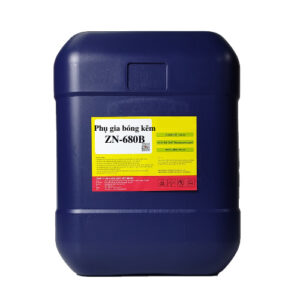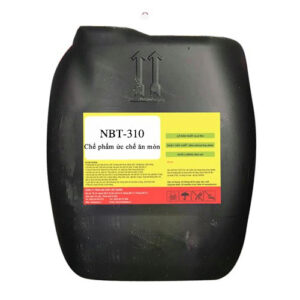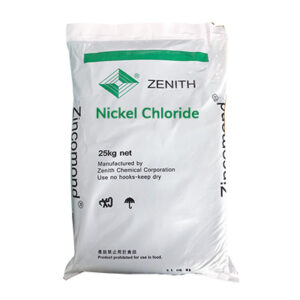Chemical formula: H2O2
Chemical name: Hydrogen peroxide, Hydrogen peroxide,
Origin: Korea , Thailand, Vietnam
Concentration: 35%, 50%
Specification: 30 kg/can
H2O2 (35-50%)- Hydrogen peroxide, also known as hydrogen peroxide, is used as an oxidizer for organic substances in the wastewater treatment process. It is especially widely used for wastewater containing organic compounds that are difficult to decompose.
Application
– Used as an oxidizer for organic substances in the wastewater treatment process. Especially widely used for wastewater containing organic compounds that are difficult to decompose.
– Fenton reaction
Fe2+ + H2O2 + H+> Fe3+ + OH- + OH.
Fe3+ + H2O2 -> Fe2+ + H+ + HOO.
2H2O2> H2O + OH. + HOO
The main types of wastewater that use hydrogen peroxide include:
Paper production wastewater
Leachate
Pharmaceutical wastewater
Wastewater from electronic components manufacturing industries
Electroplating and powder coating wastewater
Textile wastewater
Nature
– Pure H2O2 is a colorless, odorless liquid with strong oxidizing properties.
– Content: ≥ 50%. and 35-50% (Vietnamese products)
– Stability: ≤ 99 %.
– Evaporation residue: ≤ 1000 ppm.
– pH: ≤ 2.
– Free acid: ≤ 500 ppm
– Density: 1.198 g/ml
Physical properties:
Hydrogen peroxide (H2O2) is a clear liquid, slightly more viscous than water. H2O2 has strong oxidizing properties. Hydrogen peroxide is therefore a powerful bleaching agent used as a disinfectant, as well as an oxidizer, and (especially in high concentrations as HTP) as a propellant in rockets. And hydrogen peroxide is a weak acid in aqueous solution.
Chemical properties:
Hydrogen peroxide can decompose spontaneously into water and oxygen. It usually reacts as an oxidizing agent. But there are many reactions in which it reacts as a reducing agent, releasing oxygen as a byproduct. It also very rapidly forms inorganic and organic peroxides.
Decomposition
Ordinary hydrogen peroxide decomposes exothermically into water and oxygen gas spontaneously:
2 H2O2 → 2 H2O + O2 + HEAT
The reaction is favorable; it has ΔH° -98.2 kJ/mol and ΔG° -119.2 kJ/mol. The rate of decomposition depends on the temperature, the concentration of the peroxide, as well as the pH and the presence of stabilizing agents or impurities. H2O2 (35-50%) is incompatible with many substances that catalyze its decomposition. These include most of the transition metals and their compounds. The most common catalysts are manganese dioxide, potassium permanganate and silver.
The same reaction is also catalyzed by the enzyme catalase, found in the liver. Its main function in the body is to remove toxic byproducts of metabolism and reduce oxidative stress. The breakdown occurs more rapidly in alkaline media. Therefore, acid is often added as a stabilizer.
Spilling high-concentration hydrogen peroxide onto flammable substances can cause an immediate fire due to the oxygen released from the decomposition of the hydrogen peroxide. High-concentration hydrogen peroxide (HTP) must be stored in well-ventilated containers to prevent the build-up of oxygen which could lead to the container being damaged. Containers must be made of compatible materials such as PTFE, polyethylene or aluminium (do not use stainless steel) and must undergo a cleaning process (passivation) to remove all contaminants before the peroxide is added. (Note that polyethylene is compatible at room temperature but may explode with peroxide when ignited.)
In the presence of a catalyst, such as Fe2+ or Ti3+, the decomposition can proceed in a different way, with free radicals such as HO· (hydroxyl) and HOO· being produced. The combination of H2O2and Fe2+ is known as Fenton’s reagent.
Oxidation-reduction reaction
In aqueous solution, H2O2 (35-50%) can oxidize or reduce many inorganic ions. When it acts as a reducing agent, oxygen gas is produced. In acid solution, iron ion Fe2+ is oxidized to iron ion Fe3+,
2 FE2+(SOLUTION) + H2O2 + 2 H+(SOLUTION) → 2 FE3+(SOLUTION) + 2H2O(LIQUID)THEREFORE SULFITE (SO32−) IS OXIDIZED TO SULFATE (SO42−). HOWEVER POTASSIUM PEMANGANATE IS REDUCED TO MANGANESE MN2+ BY THE ACIDITY OF H2O2. INTERESTINGLY, UNDER ALKALINE CONDITIONS SOME OF THESE REACTIONS ARE REVERSE; MN2+ IS OXIDIZED TO MN4+ (IN THE FORM OF MNO2), AND FE3+ IS REDUCED TO FE2+.
2 FE3+ + H2O2 + 2 OH− → 2 FE2+ + 2 H2O + O2
Hydrogen peroxide is frequently used as a reducing agent in organic chemistry. One application is to oxidize thioethers to sulfoxides. For example, methylphenyl sulfite is oxidized to methylphenyl sulfoxide in 99% yield in methanol in 18 hours (or 20 minutes with TiCl3 catalyst):
PH-S-CH3 + H2O2 → PH-S(O)-CH3 + H2O
Alkaline hydrogen peroxide is used to epoxidize electron-deficient alkenes such as acrylic acids. H2O2 is also used to oxidize alkylboranes to alcohols, the second step of the hydroboration-oxidation process.
Applications of Hydrogen Peroxide:
Hydrogen peroxide is a strong but environmentally friendly oxidizer, used for bleaching in textiles, paper production, food processing, minerals, petrochemicals and consumer goods.
Hydrogen peroxide is also used in industrial waste treatment.
In medicine: Hydrogen peroxide is used to disinfect, sterilize…
In industry: Hydrogen peroxide also includes the production of Sodium percarbonate and Sodium perporate which are used as mild detergents in laundry detergents, Hydrogen peroxide is also used in the production of certain organic peroxide compounds such as dibenzoyl peroxide, Hydrogen peroxide is used as a free radical initiator in polymerization reactions.
Notes when using Hydrogen Peroxide:
– Store hydrogen peroxide in a cool, dry place; avoid direct sunlight, heat and flammable substances. If the product’s hydrogen peroxide packaging is damaged or shows signs of leakage, wash it with water.
– Hydrogen peroxide is a strong oxidizer, the free oxygen radicals will combine with flammable substances to cause fire or explosion.
– When exposed to organic chemicals or flammable materials, Hydrogen Peroxide will decompose rapidly and can cause fire or explosion. Hydrogen Peroxide is corrosive and burns the skin, eyes and respiratory tract.
– Hydrogen peroxide is very toxic when inhaled.







Reviews
There are no reviews yet.